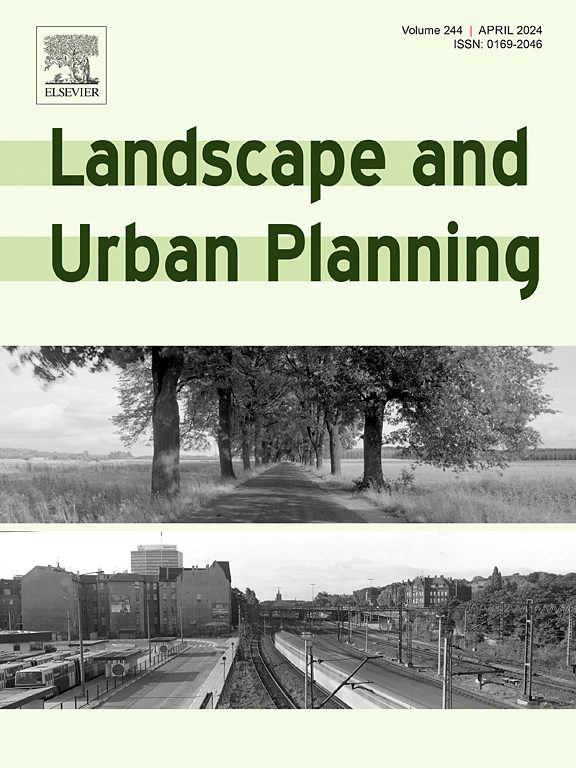One for all, all for one? Pollinator groups differ in diversity and specialization of interactions across urban green spaces
IF 7.9
1区 环境科学与生态学
Q1 ECOLOGY
引用次数: 0
Abstract
Urbanization poses significant threats to pollinators, but they may respond differently to habitat modification according to their nesting and foraging requirements. Despite the diversity of pollinator groups and species found in urban areas, research often focus on bees, neglecting other groups. Whether bee response to urbanization suffice in representing the wider pollinator spectrum, however, is poorly understood. Here, we examined how urbanization impacts the interaction networks between plants and different pollinator groups and evaluated the dissimilarities of urban green spaces at both local and regional scales within a Neotropical metropolis. Recording 1,404 interactions between 262 plant and 220 pollinator species, we found that network specialization varied among pollinator groups but was not affected by urban impervious surface cover. Such lack of difference may happen owing to the prevalence of generalist species across urban environments. Importantly, urban green spaces showed high dissimilarities in species and interactions, emphasizing the heterogeneity found across the urban landscape. Plant composition also varied between urban green spaces and was strongly correlated with interaction dissimilarities, indicating that floral resources contribute to unique interactions found in different areas. Our results suggest that although important, bees alone do not represent the wider response of pollinators to urbanization. Furthermore, the high dissimilarities influenced by site specific plant-pollinator co-occurrence underscore that multiple and connected green spaces are required to safeguard plant-pollinator interaction diversity and its vital ecosystem function in cities.

我为人人,人人为我?传粉者群体在城市绿地相互作用的多样性和专业化方面存在差异
城市化对传粉媒介构成了重大威胁,但它们可能会根据筑巢和觅食需求对栖息地的改变做出不同的反应。尽管在城市地区发现了传粉者群体和物种的多样性,但研究往往集中在蜜蜂身上,而忽视了其他群体。然而,蜜蜂对城市化的反应是否足以代表更广泛的传粉媒介,人们知之甚少。在这里,我们研究了城市化如何影响植物与不同传粉者群体之间的相互作用网络,并评估了一个新热带大都市在局部和区域尺度上的城市绿地差异。通过对262种植物和220种传粉媒介之间1404种相互作用的记录,我们发现传粉媒介群体之间的网络专业化存在差异,但不受城市不透水地表覆盖的影响。这种差异的缺乏可能是由于在城市环境中普遍存在的多面手物种。重要的是,城市绿地在物种和相互作用方面表现出高度的差异性,强调了城市景观的异质性。植物组成在城市绿地之间也存在差异,且与相互作用差异密切相关,表明植物资源对不同区域的独特相互作用有贡献。我们的研究结果表明,尽管蜜蜂本身很重要,但它并不能代表传粉媒介对城市化的更广泛反应。此外,受特定地点植物-传粉媒介共发生影响的高度差异表明,城市中需要多个连接的绿地来保护植物-传粉媒介相互作用的多样性及其重要的生态系统功能。
本文章由计算机程序翻译,如有差异,请以英文原文为准。
求助全文
约1分钟内获得全文
求助全文
来源期刊

Landscape and Urban Planning
环境科学-生态学
CiteScore
15.20
自引率
6.60%
发文量
232
审稿时长
6 months
期刊介绍:
Landscape and Urban Planning is an international journal that aims to enhance our understanding of landscapes and promote sustainable solutions for landscape change. The journal focuses on landscapes as complex social-ecological systems that encompass various spatial and temporal dimensions. These landscapes possess aesthetic, natural, and cultural qualities that are valued by individuals in different ways, leading to actions that alter the landscape. With increasing urbanization and the need for ecological and cultural sensitivity at various scales, a multidisciplinary approach is necessary to comprehend and align social and ecological values for landscape sustainability. The journal believes that combining landscape science with planning and design can yield positive outcomes for both people and nature.
 求助内容:
求助内容: 应助结果提醒方式:
应助结果提醒方式:


